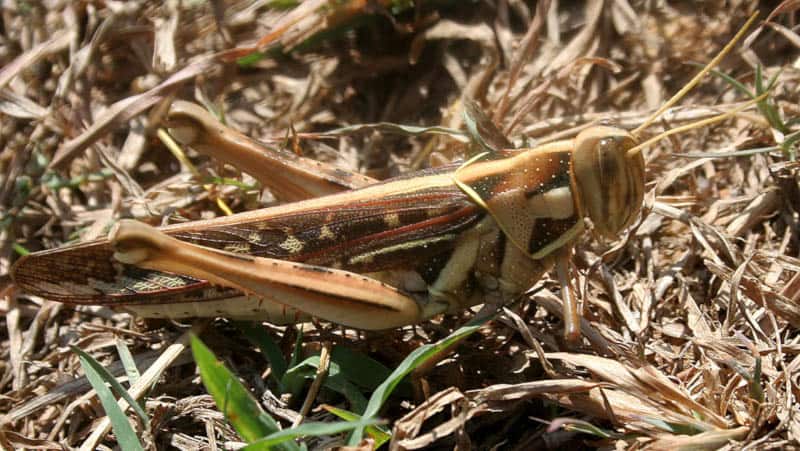Desert Locust Facts
- Firstly, the Desert Locust remains a particularly dangerous variety of insect. That’s because enormous swarms of this invertebrate have periodically threatened agriculture in certain areas for centuries.
- Further, when a multitude of individuals swarm, as happens periodically, they are truly voracious. Given the vast numbers and voraciousness, these swarms have a terrifying capacity.
- This occurs due to the unbelievably vast numbers involved in such occurrences. Due to this fact, each occurrence threatens the food supplies of as much as 10% of the world’s population.
- Finally, this represents Nature’s anger at its worst. The swarms also remain capable of covering vast distances. This only serves to increase the danger it can pose to global food supplies.
Related Articles
Desert Locust Physical Description
Most notably, the seemingly unstoppable Desert Locust remains visually no different from countless related species. Furthermore, this insect, and related species, are simply grasshoppers with swarming patterns of behavior.
In appearance, it actually remains rather ordinary. Further, its coloring consists of random patterns of green, brown, black, and brownish-orange. This particular species of locust, however, has shorter horns than most.
Also, like most related arthropods, it has over-sized and powerful hind legs. It also has strong wings, which it mainly uses during the swarming phase of its life. Otherwise, the creature rarely takes to the air.
- Kingdom: Animalia
- Phylum: Arthropoda
- Class: Insecta
- Order: Orthoptera
- Family: Acrididae
- Genus: Schistocerca
- Species: S. gregaria
Desert Locust Distribution, Habitat, and Ecology
First of all, the Desert Locust has an extensive area of habitation. That’s partly due to its migratory nature. Therefore, it inhabits regions across Asia, Europe, Africa, and the Middle East.
Additionally, when not swarming, it typically lives in arid regions, thus the common name. During such occurrences, it seeks out vegetation to consume. This it also does in vast quantities, since each individual consumes its own weight per day.
The females lay large numbers of eggs in a confined area, and those then hatch quickly. In the confined space, the young nymphs physically bump into each other which actually triggers chemical changes in the bodies.
The coloring changes and behaviors suddenly becomes quite gregarious, even aggressive. Then individuals take flight in huge swarms, consuming everything in their path.
Species Sharing Its Range
Check out our other articles on 9 of the Weirdest Animals on Earth, Draco Volans, Lake Nakuru, Icicle Mushroom, Pigbutt Worm, Black Rain Frog, Northern Bald Ibis, Cape Porcupine

